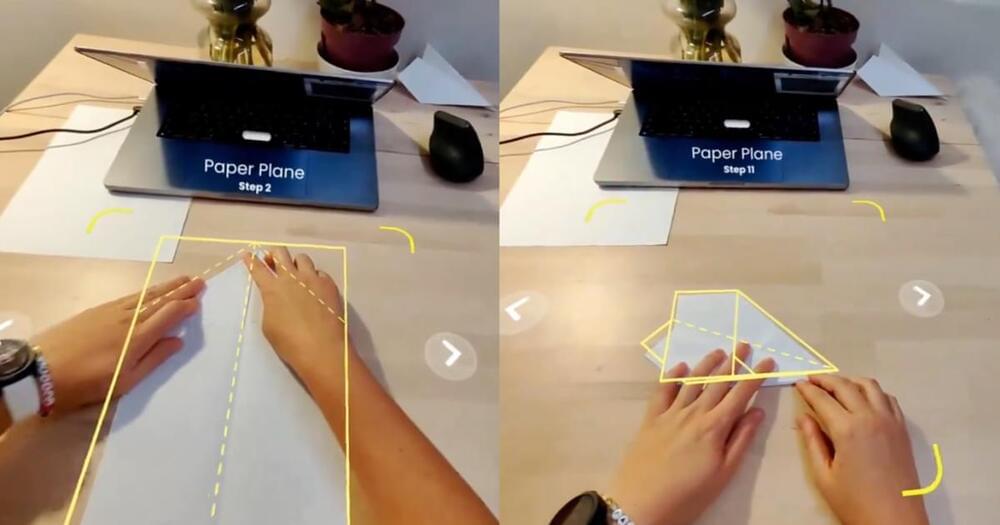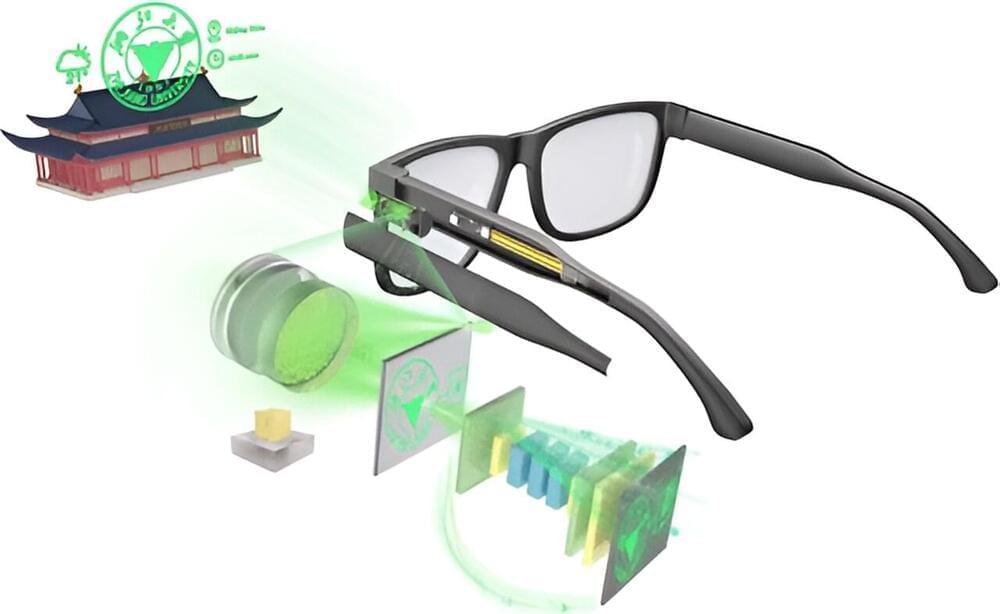A nice tool by Inna Horobchuk.



Augmented reality (AR) takes digital images and superimposes them onto real-world views. But AR is more than a new way to play video games; it could transform surgery and self-driving cars. To make the technology easier to integrate into common personal devices, researchers report in ACS Photonics how to combine two optical technologies into a single, high-resolution AR display. In an eyeglasses prototype, the researchers enhanced image quality with a computer algorithm that removed distortions.
From AI-generated video advancements to new AI-powered AR glasses, here were the 5 biggest announcements.

Storytelling has evolved beyond mere narration—it’s now about immersion, interaction, and creating a deep emotional connection. Few organizations understand this better than National Geographic, a brand renowned for bringing the natural world to life through visually stunning, fact-driven content. With their latest digital experience, “Into the Amazon,” National Geographic has raised the bar even higher, blending cutting-edge technology with unparalleled storytelling to offer audiences a front-row seat to one of the planet’s most vital ecosystems: the Amazon rainforest.
At a time when the world’s environmental challenges are more pressing than ever, National Geographic’s “Into the Amazon” doesn’t just inform viewers; it transforms how we understand the Amazon’s role in the global ecosystem. This article explores how innovative technologies—such as interactive 3D mapping, augmented reality, and immersive media formats —are being harnessed to deliver a uniquely engaging experience. It also reflects on the broader implications for the future of digital storytelling, where technology and narrative merge to create impactful, lasting impressions.
As digital media continues to dominate, audience expectations have shifted. Passive consumption is no longer enough—today’s audiences crave interaction, engagement, and experiences that go beyond the screen. Immersive storytelling, particularly in the environmental and scientific fields, has emerged as a powerful tool to captivate and educate.

Watch a cozy city full of miniature people grow right in your living room in Wall Town Wonders, an upcoming mixed reality game by Cyborn.
Help tiny characters expand their world by completing quests and mini-games in the game’s detailed environments and interact with your new neighbors like never before using your hands. You can “touch” the objects and even guide a virtual plane.

Researchers at the University of Toronto have found that using virtual and augmented reality (VR and AR) can temporarily change the way people perceive and interact with the real world—with potential implications for the growing number of industries that use these technologies for training purposes.
The study, published recently in the journal Scientific Reports, not only found that people moved differently in VR and AR, but that these changes led to temporary errors in movement in the real world. In particular, participants who used VR tended to undershoot their targets by not reaching far enough, while those who used AR tended to overshoot their targets by reaching too far.
This effect was noticeable immediately after using VR or AR, but gradually disappeared as participants readjusted to real-world conditions.
The fighter’s new engines can power laser weapons and enable a “pilot optional” mode.
This website is using a security service to protect itself from online attacks. The action you just performed triggered the security solution. There are several actions that could trigger this block including submitting a certain word or phrase, a SQL command or malformed data.

Gallium nitride (GaN)-based light-emitting diodes (LEDs) have transformed the lighting industry by replacing conventional lighting technologies with superior energy efficiency, longer operating life and greater environmental sustainability.
In recent years, considerable attention has been paid to the trend toward miniaturization of LEDs, driven by display devices, augmented reality, virtual reality, and other emerging technologies. Due to the lack of cost-effective native substrates, the presence of high threading dislocation density in heteroepitaxial films grown on sapphire substrate is a major limiting factor for device performance.
In addition, Fresnel reflections at the interface between epitaxy and substrate caused by abrupt changes in the refractive indices of the material reduce the light energy utilization.
As part of the 2024 Prostate Cancer Patient Conference, Dr. Eric Small discusses systemic therapy treatment in advanced prostate cancer, including AR-targeted therapy. The presentation includes definitions of disease states, categories of treatment types, and standards in treatment selection.
Recorded on 03/09/2024. [Show ID: 39768]
Donate to UCTV to support informative \& inspiring programming:
https://www.uctv.tv/donate.
Please Note: Knowledge about health and medicine is constantly evolving. This information may become out of date.
More videos from: Prostate Cancer Patient Conference.
(https://www.uctv.tv/prostate-cancer-c…)
Explore More Health \& Medicine on UCTV
(https://www.uctv.tv/health)
UCTV features the latest in health and medicine from University of California medical schools. Find the information you need on cancer, transplantation, obesity, disease and much more.
UCTV is the broadcast and online media platform of the University of California, featuring programming from its ten campuses, three national labs and affiliated research institutions. UCTV explores a broad spectrum of subjects for a general audience, including science, health and medicine, public affairs, humanities, arts and music, business, education, and agriculture. Launched in January 2000, UCTV embraces the core missions of the University of California — teaching, research, and public service – by providing quality, in-depth television far beyond the campus borders to inquisitive viewers around the world.
AR/VR/MR glasses released in April 2024? i didnt know they were so far along already. Im curious if anyone used these, and impressions of? Still a little bulky, but, my current prediction is this will take over place of cell phones 2029/2030. But, needs to be slimmed down a bit yet; 5 years.
Step into the future with Rokid AR Lite! Our sleek and stylish design lets you take to the streets in style, while its multi-screen feature wraps around your space for seamless work and play. Activate sports mode for unwavering screen stabilization, and immerse yourself in vivid spatial videos in 3D, bringing your memories to life like never before. Don’t miss out on this revolutionary AR experience!
🛒 Get it at the best price on Kickstarter: https://bit.ly/3X1P0X1